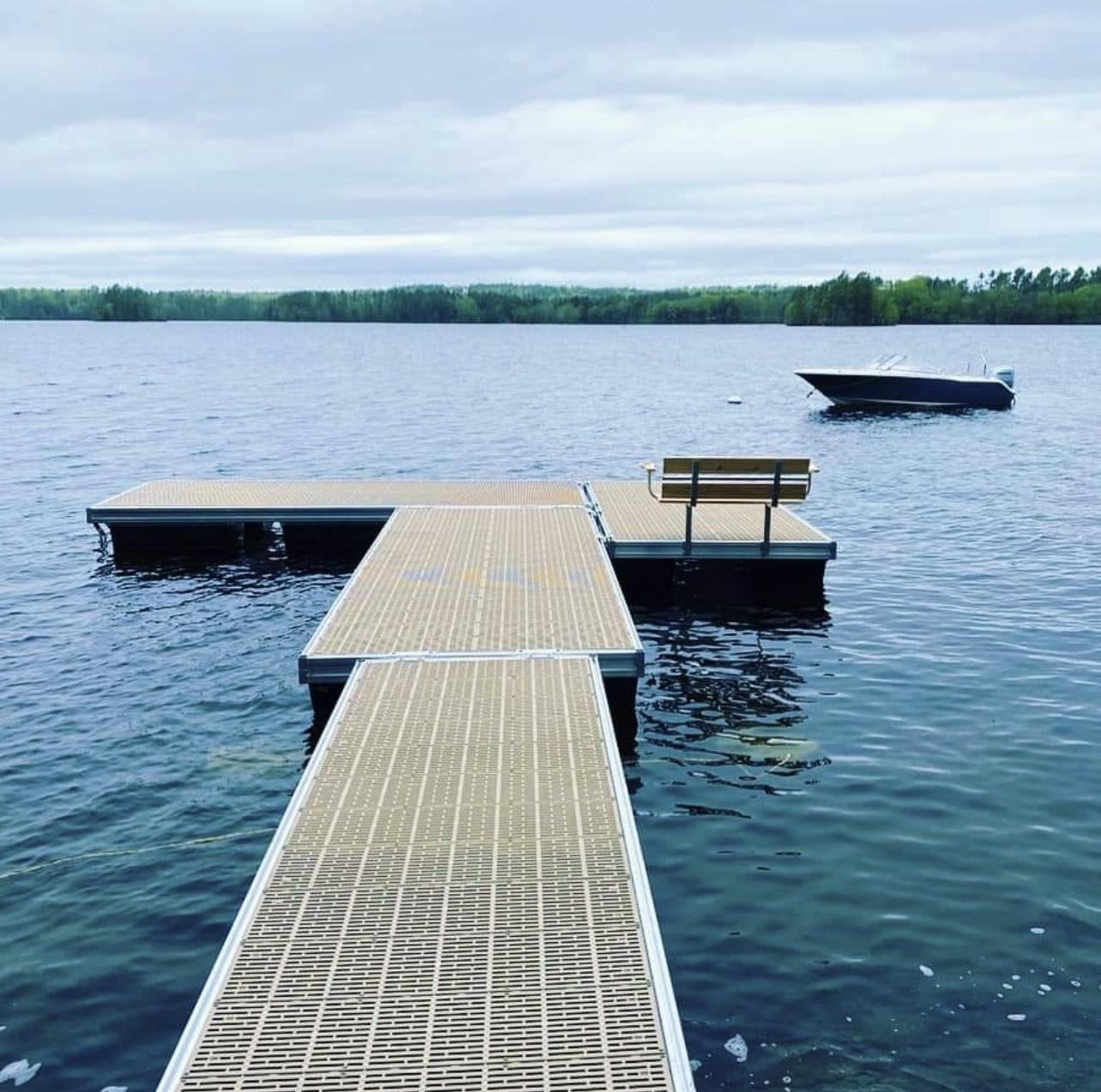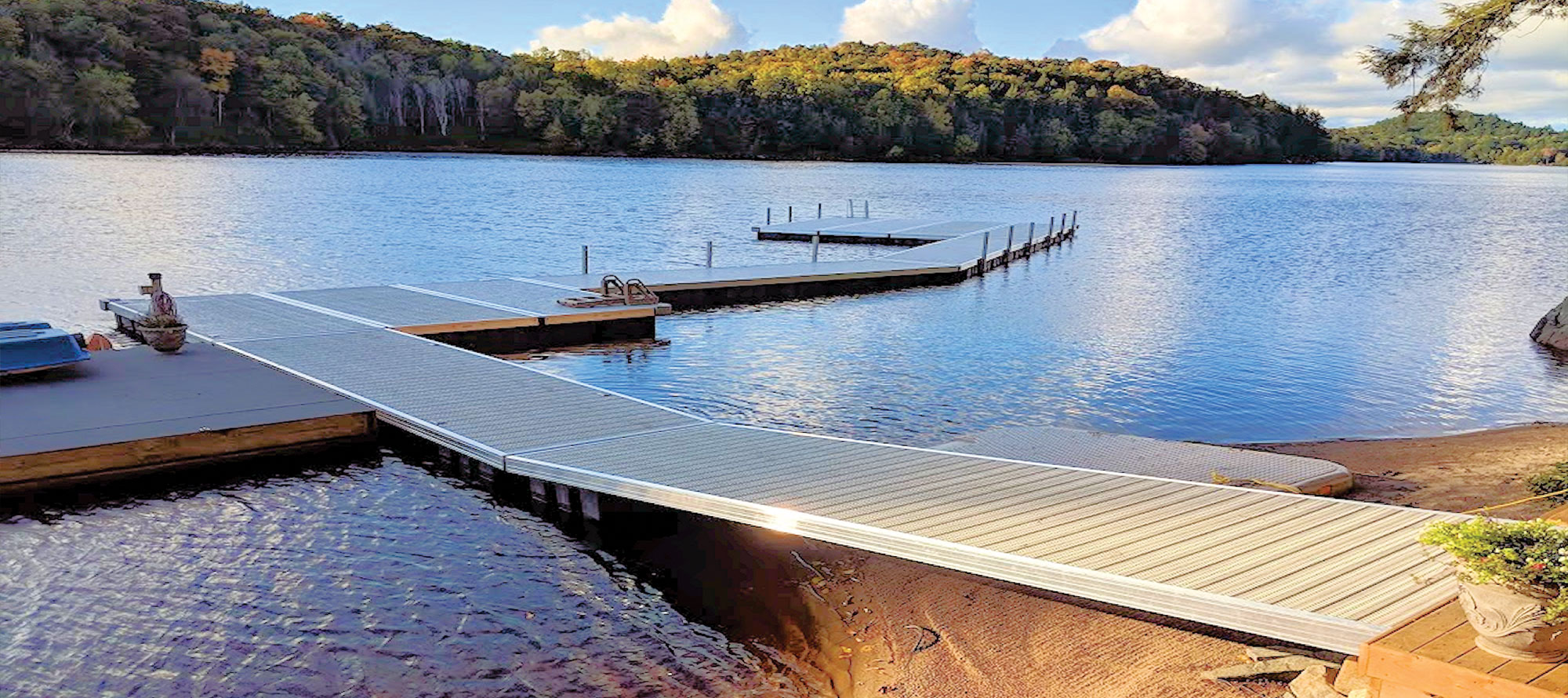Ingenious Floating Docks: The Future of Waterside Gain Access To and Leisure
Wiki Article
Upgrade Your Beachfront With Durable Floating Docks
Upgrading your beachfront with long lasting floating docks can substantially enhance both functionality and aesthetic appeals, providing a functional option for various water tasks. These structures are designed to adjust to ever-changing water degrees, ensuring safety and security and availability throughout the seasons. With a variety of materials readily available, including low-maintenance alternatives and typical wood, selecting the ideal dock can complement your individual style and satisfy practical requirements. Recognizing the nuances of installment and maintenance is critical for making sure longevity and performance. When making this investment?, what elements should you consider.Advantages of Floating Docks
Floating docks deal a plethora of benefits that enhance their appeal for numerous maritime applications. Unlike standard fixed docks, floating docks increase and loss with the trend, guaranteeing consistent access for boats and boat no matter of environmental problems.
Additionally, floating docks are much easier to move and install, giving versatility for short-lived or seasonal usage. Their modular style enables modification to fit particular demands, whether for personal marinas, household watersides, or business applications.
In addition, floating docks create very little disruption to the aquatic atmosphere, maintaining local ecological communities and decreasing the probability of disintegration. They likewise provide enhanced security and security for individuals, as their buoyant nature provides an extra flexible surface area than inflexible structures.
Moreover, floating docks can facilitate a diverse variety of tasks, such as angling, swimming, and entertainment boating, making them an important possession for beachfront development. Their flexibility and usefulness make floating docks a recommended selection for a variety of maritime projects.
Selecting the Right Materials
Selecting proper products for floating docks is essential to their long life, efficiency, and total performance. When picking products, consider factors such as environmental exposure, upkeep needs, and architectural integrity. Typical materials include wood, plastic, light weight aluminum, and composite alternatives, each offering distinctive benefits and disadvantages.Wood, while visually pleasing, calls for normal upkeep to stop rot and decay. Pressure-treated wood can boost durability, yet it might still catch water damage over time. Plastic floats, often made from high-density polyethylene, are immune to rust and need minimal upkeep, making them an eye-catching selection for low-maintenance applications.
Light weight aluminum is one more practical choice, known for its stamina and lightweight residential properties. It is resistant to corrosion and can hold up against rough weather, although it might be a lot more expensive than various other products. Composite products combine the very best features of wood and plastic, offering a resistant and low-maintenance alternative that mimics the look of wood without the linked downsides.
Ultimately, the choice of material need to straighten with the meant use, ecological considerations, and budget plan constraints, making sure a functional and sturdy floating dock that fulfills your particular demands.
Setup Refine Overview
The effective installment of a floating dock counts on careful preparation and implementation, guaranteeing that it runs effectively in its designated setting. The primary step includes assessing site problems, consisting of water depth, shoreline functions, and dominating weather patterns, which will notify the dock layout and anchoring system.Complying with the website analysis, the following stage is to prepare the floating dock components. This includes setting up the More Bonuses structure, securing floats, and attaching any essential hardware. It is important to make sure that all links are durable and water-resistant to endure aquatic conditions.
Once the dock is put together, the setup procedure begins with placing the dock in the water. This can include a crane or various other training tools, specifically for larger frameworks. Correct placement is essential for functionality and safety.

Maintenance Tips for Long Life
Regular upkeep is vital for ensuring the durability and optimal efficiency of a floating dock. To attain this, begin with regular evaluations a minimum of twice a year, concentrating on the integrity of the dock's framework, including the flotation tools and linking equipment. Try to find indicators of damages, corrosion, or wear, and attend to any problems promptly to avoid more wear and tear.Cleansing is another vital facet of maintenance. Get rid of debris, algae, and barnacles from the dock's surface to stop slippery problems and maintain aesthetic charm. Make use of a soft brush and a light cleaning agent to avoid damaging the dock's materials.
Furthermore, make certain that the dock is properly anchored and protected to stand up to seasonal adjustments in water degrees and weather conditions. Inspect the anchoring system for security and make modifications as essential.
Enhancing Your Exterior Visual
To develop a visually appealing outdoor space, incorporating a drifting dock can significantly enhance the overall aesthetic of your waterfront residential property. Floating docks are not just practical however can likewise act as a striking centerpiece that complements the natural surroundings - floating dock services. Offered in different materials and designs, these docks can be customized to match your property's building design and see post landscapeThe try these out addition of decorative elements, such as incorporated illumination or elegant railings, further boosts the dock's aesthetic charm. Think about making use of natural wood finishes, which mix effortlessly with the atmosphere, or going with modern-day materials like aluminum or composite outdoor decking that use a sleek, modern look.
Purposefully positioning planters or seating areas on or around the dock can create welcoming spaces that urge relaxation and enjoyment of beachfront views. In addition, integrating colors and textures that integrate with your landscape will certainly create a cohesive visual throughout your outside location.

Verdict

Updating your beachfront with long lasting floating docks can considerably boost both functionality and looks, giving a versatile remedy for various water activities. Unlike standard set docks, floating docks increase and loss with the tide, guaranteeing regular accessibility for watercrafts and boat no matter of environmental problems.Picking proper products for floating docks is vital to their long life, performance, and overall effectiveness.As soon as the dock is set up, the installation procedure commences with positioning the dock in the water.In recap, floating docks deal various advantages, including flexibility to water degree changes and a range of product choices.
Report this wiki page